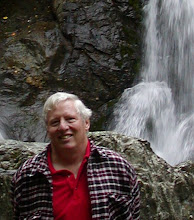This is a great video that can be used as part of the physics lessons on angular momentum. I know that this video would have been a big help to me -- I struggled to understand torque and angular momentum until I actually saw some physical demonstrations.
There are countless such on-line resources that can be used in science, history, geography, art, music and literature classes at every grade level in school. So, how often are such resources actually used? It must take time and effort to find these types of resources. And, even after finding cool resources, there are no guarantees that the resource will be available in the future. Some may be pulled because the sponsor either relocates them, or stops supporting them. Environmental factors can also effect availability. Volcano-cams are a case in point. For instance, the volcano-cam aimed at Mt. St. Helens allowed anyone in the world to view the most recent dome-building episode. Except when it was foggy or rainy, or except in the winter when the facility got snowed in. The Hawaii Volcanic Observatory has a few volcano-cams, one of them is pointed at Pu`u `O`o, the current vent that has been actively erupting since 1983, and another one that is aimed at Halema`uma`u, the vent in the main caldera of Kilauea, one of the volcanoes on the big island. In 2007, about a year before Halema`uma`a became visibly active, this volcano-cam in a location to capture activity associated with a brief lava outbreak along the Upper East Rift Zone.
Another problem with demonstrations -- as technology changes, students may not be familiar with the objects shown. In the olden days (before, say, 2005) most of your students would have recognized a personal CD player, and understood that when turned on, the CD is spinning rapidly. I wonder how much longer that this will be the case. I can imagine showing this to middle schooler students even today (2009), and having them look at the curious pieces the astronaut was pushing around the way we view hand tools used in the 19th century:

(Source: Violin Making, by Walter H. Mayson, courtesy of Project Gutenberg.)

No comments:
Post a Comment